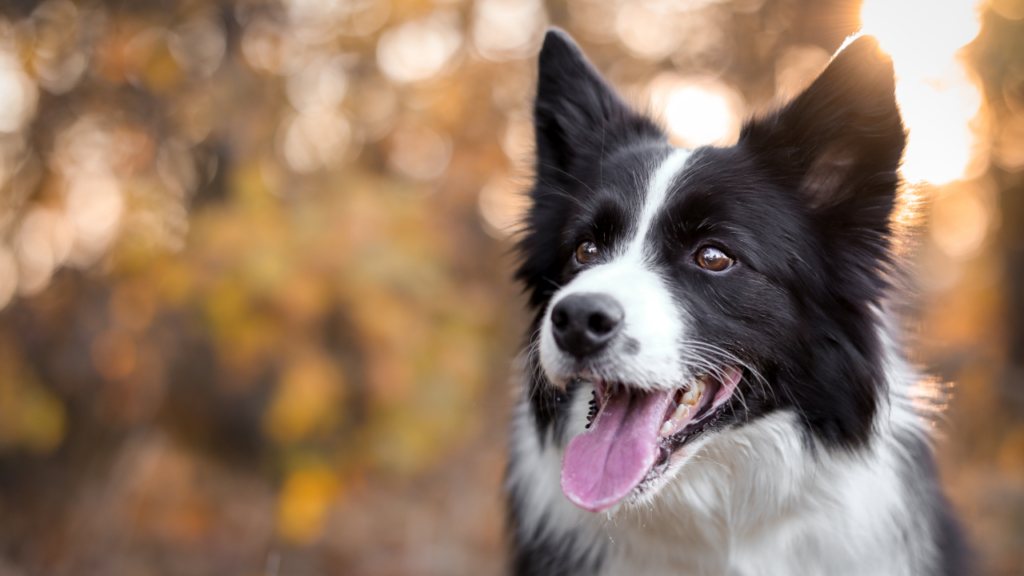
If you’re searching for the healthiest large dog breeds, you’ve come to the right place.
Large dogs often bring immense joy to a household and can be the perfect healthy dog breeds for families.
Ensuring you pick breeds known to be physically fit dog breeds can lead to years of happiness.
It can lead to fewer health problems, with less trips to the vet.
Sifting through the myriad of dog breeds, we’ve compiled a list of the top healthiest dog breeds.
These dogs stand out for their impressive lifespans and slight incidence of health issues.
Whether you’re interested in a playful large breed or the guardianship of the strongest large dog breeds.
Prepare to meet your next four-legged family member that ticks all the right boxes for health and happiness.
Table of Contents
ToggleAustralian Shepherd
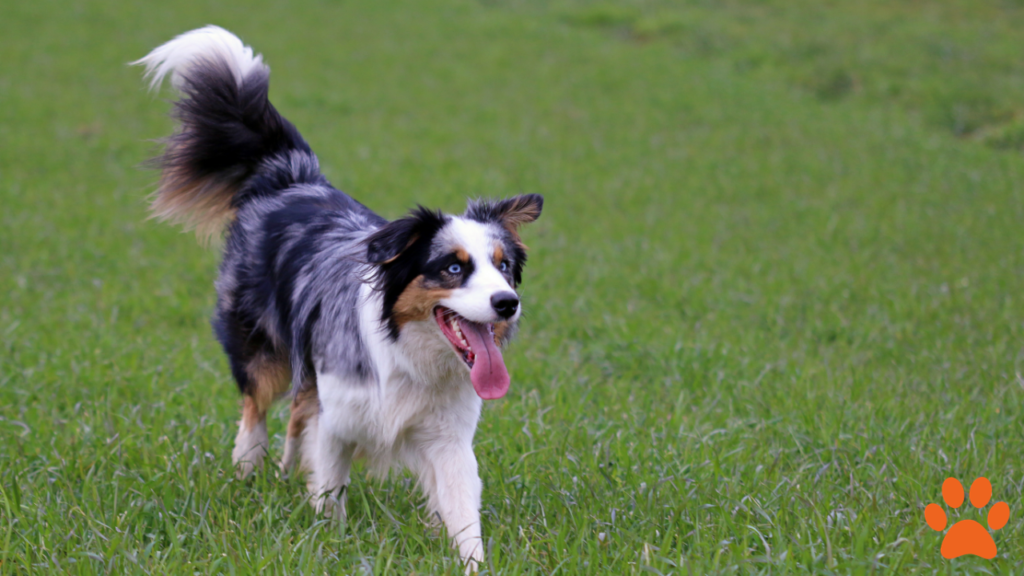
When you think of Australian Shepherd, think robust energy.
These dogs offer dedicated companionship, with a canvas of vibrant health.
The Australian Shepherd, known as the Aussie, is one of the healthiest large dog breeds.
A life pulsing with activity is what this dog breed craves.
Providing ample mental stimulation and an adequate activity level is key to its well-being.
These physically fit dog breeds are not just about boundless energy;
their intelligence is notable, demanding tasks and challenges to engage their quick minds.
Active families find in Australian Shepherds a loyal friend that aligns with their dynamic lifestyle.
Australian Shepherds need proper care and an environment rich in activity.
| Feature | Details |
|---|---|
| Life Expectancy | 12 to 15 years |
| Best Suited For | Active families, individuals with an active lifestyle |
| Exercise Needs | High – requires daily physical and mental activities |
| Common Health Concerns | Hip dysplasia, elbow dysplasia, certain eye diseases |
| Temperament | Energetic, intelligent, loyal |
Keeping your Australian Shepherd both physically and mentally active isn’t just a recommendation;
it’s a requirement for maintaining one of the robust large dog breeds.
The beauty of bonding with an Aussie is in the shared adventures and the health benefits that accompany an active lifestyle.
Ensure regular check-ups with a veterinarian.
This is essential for early detection and prevention of potential health issues.
You’ll have a companion who is not just physically adept but emotionally in tune with your family.
German Shepherd
When you think about healthy dog breeds for families, the German Shepherd stands out as a top contender.
Famous for their intelligence, loyalty, and versatility.
German Shepherds are excellent companions for those who appreciate an active lifestyle.
They shine in various roles, from family pets to stalwarts in law enforcement and herding.
As one of the most robust large dog breeds, their health relies upon regular physical exercise and plenty of mental stimulation.
Concerns like hip dysplasia, which this breed can be prone to, highlight the importance of maintaining a healthy lifestyle.
It’s essential to incorporate both physical exercise and a well-balanced diet.
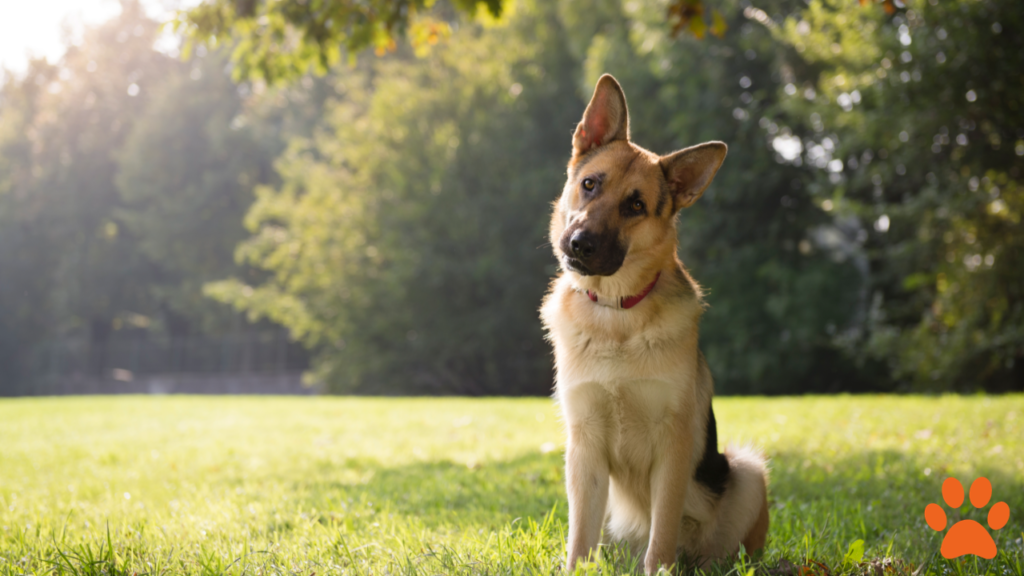
This will help to ensure your German Shepherd stays in peak condition.
To make the most of your time with your furry friend, consider activities that fulfill their physical requirements.
Make sure you are also providing mental challenges to keep their sharp minds engaged.
- Regular Exercise: Integrating daily walks, runs, and playtime to prevent the onset of joint conditions and maintain muscle tone.
- Mental Engagement: Offering puzzle toys, obedience training, and new tricks to keep their intellect stimulated.
- Health Monitoring: Scheduling regular veterinary check-ups to monitor for early signs of hip dysplasia and other health concerns.
It’s clear why German Shepherds rank highly among healthiest large dog breeds.
Their need for physical activity makes them perfect large breed dogs for families.
Perfect for those looking to integrate a loving and protective member into their homes.
As one of the most adaptable and healthy dog breeds for families, a well-cared-for German Shepherd brings joy and vigor to your household.
| Health Consideration | Preventative Measures | Benefits |
|---|---|---|
| Hip Dysplasia | Weight management, regular exercise, Orthopedic Foundation for Animals (OFA) testing | Reduced risk of joint pain and increased mobility |
| Mental Health | Interactive play, training sessions, socialization opportunities | Improved behavior and mental sharpness |
| Overall Fitness | Balanced diet, daily physical activity, routine health check-ups | Enhanced endurance and a stronger immune system |
Belgian Malinois
If you’re considering adding a large dog to your family, the Belgian Malinois should be on your list.
These dogs are one of the healthiest large dog breeds.
They are celebrated for their high energy and exceptional trainability.
Often employed in demanding jobs such as herding or detection.
They have proven their worth time and again in various work roles and as loyal companions.
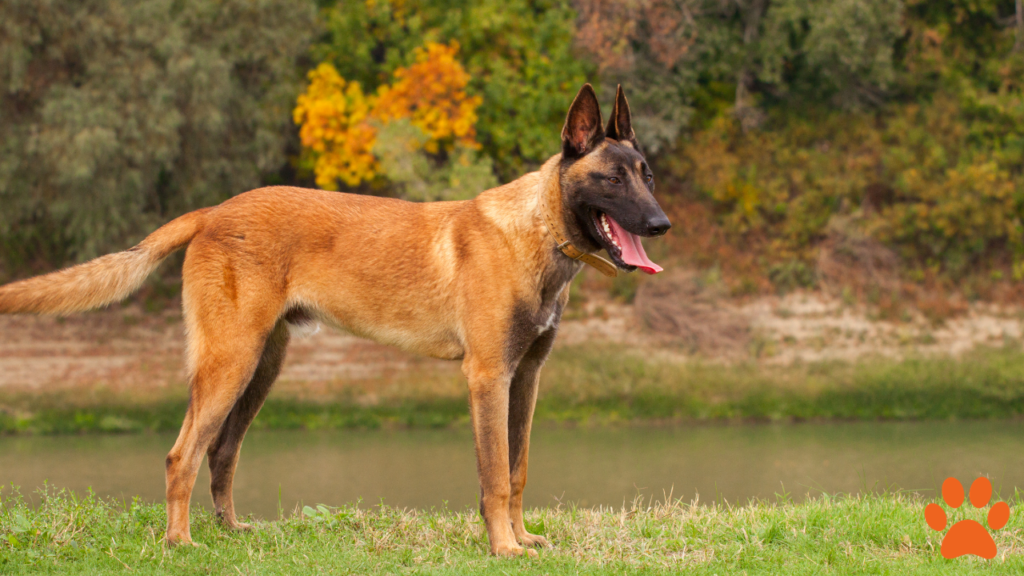
Your Belgian Malinois will thrive with ample outdoor activities and a high activity level.
This is integral to keeping this highly health-conscious dog breed in peak condition.
Notably robust, Malinois can reach a ripe old age of up to 14 years with the right care and attention to exercise.
Despite their impressive stamina and resilience, Belgian Malinois are predisposed to some health conditions such as cataracts.
Regular veterinary checkups can help ensure that any signs of this condition are identified and addressed early.
| Health Aspect | Details |
|---|---|
| Lifespan | Up to 14 years with proper care |
| Exercise Needs | High; thrives on physical and mental challenges |
| Health Screenings | Recommended for eyes to detect early signs of cataracts |
| Optimal Environment | Access to outdoors for activities and training exercises |
| Temperament | Energetic, trainable, and loyal |
When considering a Belgian Malinois, remember that this breed epitomizes robust large dog breeds.
They are perfectly suited for active individuals or families who love the outdoors.
Their health, matched with their dynamic personality, makes the Malinois an outstanding companion.
Alaskan Malamute
Alaskan Malamutes, known for their impressive strength and resilience.
They rank among the healthiest large dog breeds.
These giant dogs are not just known for their capacity to pull heavy loads.

As one of the longest living among large dog breeds, the key to maintaining their well-being lies in regular exercise and a balanced diet.
When considering bringing an Alaskan Malamute into your family, it’s important to be mindful of the breed’s needs.
Particularly with exercise and nutrition.
Hip dysplasia, a common ailment in many big dogs, can be mitigated with careful monitoring of their activity and weight.
Let’s take a closer look at the facets of caring for these majestic giant dog breeds.
| Dietary Considerations | Exercise Needs | Common Health Checks |
|---|---|---|
| High-quality dog food appropriate for large breeds | Daily walks, hikes, or weight-pulling activities | Regular veterinary visits to monitor for hip and joint issues |
| Monitor caloric intake to prevent obesity | Free play in a secured, open space | Yearly check-ups for eye health and thyroid function |
| Adherence to a feeding schedule to aid digestion | Engagement in activities that cater to their strength and stamina | Genetic testing for inherited conditions |
German Shorthaired Pointer
If you’re looking for an active, enthusiastic canine companion, the German Shorthaired Pointer might just be the breed for you.
Belonging to some of the healthiest large dog breeds, these dogs are the epitome of vitality and vigor.
Renowned for their remarkable agility and stamina.
German Shorthaired Pointers shine in both land and water activities, making them one of the most active dog breeds.
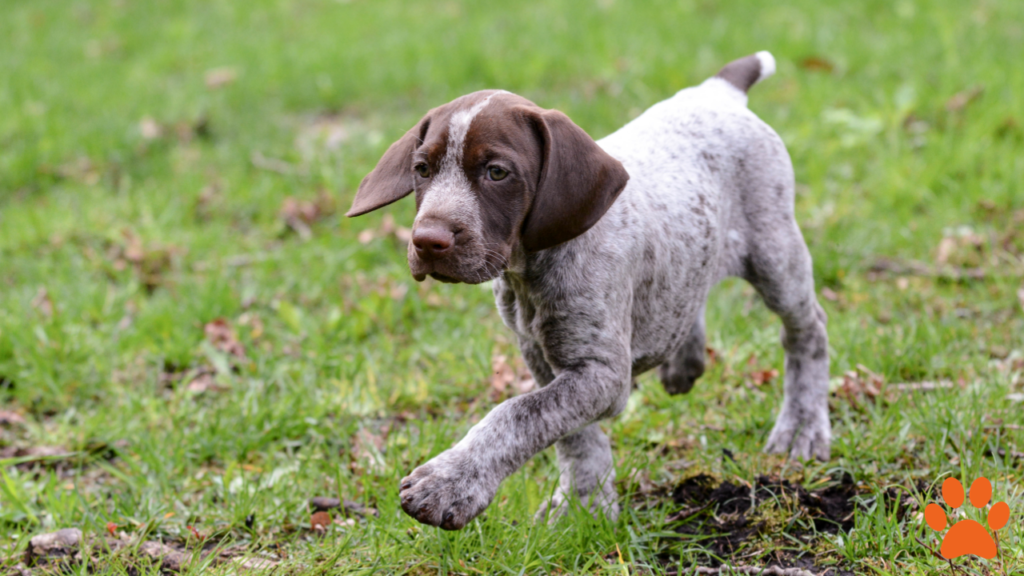
With a lifespan averaging between 12 to 15 years, they stand out amongst the top healthiest dog breeds.
While this dog breed is hearty, it is not without its share of potential health concerns.
To keep your German Shorthaired Pointer thriving, it’s vital to be aware of and proactive in managing conditions such as hip dysplasia.
Furthermore, their high activity level demands regular, vigorous exercise and mental engagement.
These are key factors in maintaining optimal health and preventing issues like elbow dysplasia.
- Exercise: Integral for preventing weight gain and joint issues.
- Mental Stimulation: Crucial to keep the intelligent GSP engaged and out of trouble.
- Health Screenings: Regular vet check-ups to monitor for signs of hip or elbow dysplasia.
- Diet: A balanced diet suitable for active breeds to support their energy needs.
| Age | Daily Exercise Needs | Common Health Screenings | Signs of Hip Dysplasia |
|---|---|---|---|
| Puppy (Under 1 year) | Moderate play sessions | Initial vaccinations and health checks | Difficulty in rising, reluctance to jump or run |
| Adult (1 – 7 years) | 1-2 hours of vigorous activity | Annual check-ups, hip evaluation | Decrease in thigh muscle mass, limping after exercise |
| Senior (8 years and up) | Gentler walks, swim sessions | Bi-annual check-ups, arthritis screening | Stiffness, especially after rest |
Remember, your German Shorthaired Pointer not only wants to be active but needs to be active.
Whether through jogs in the park, interactive games, or canine sports.
Keeping your dog engaged is the cornerstone to a long and healthy life.
Give your GSP the gift of good health with consistent care, and enjoy the unwavering loyalty and joy that this breed brings into your life.
Border Collie

Imagine a dog that embodies vitality, intelligence, and the joy of movement.
As one of the top healthiest dog breeds, the Border Collie thrives when both its mind and body are engaged.
This breed’s agile nature makes it a superb choice for those seeking an active dog breed known for its remarkable health.
Your Border Collie will dazzle you with its need for mental stimulation.
This big dog requires activities such as intelligent play, agility sports, or herding activities.
- Notable for high energy levels and intelligence
- Requires continuous exercise and mental challenges
- Predisposed to certain genetic conditions such as Collie eye anomaly
- Averages a lifespan of around 12 years when well-cared-for
A commitment to regular activity is crucial to maintain both their physical and mental well-being.
If you’re up for the challenge, a Border Collie will reward you with companionship, fun, and a shared active lifestyle that promotes health for both of you.
| Lifespan | Average Exercise Needs (per day) | Common Health Issues | Preferred Activities |
|---|---|---|---|
| ~12 years | Minimum 2 hours | Collie Eye Anomaly, Hip Dysplasia | Herding, Fetch, Agility Sports |
Australian Cattle Dog
Looking for a pooch that embodies vitality and robust health?
The Australian Cattle Dog is a sterling choice.
Celebrated as one of the top healthiest large dog breeds.
This canine cohort is renowned for its sharp intelligence and exceptional work ethic.
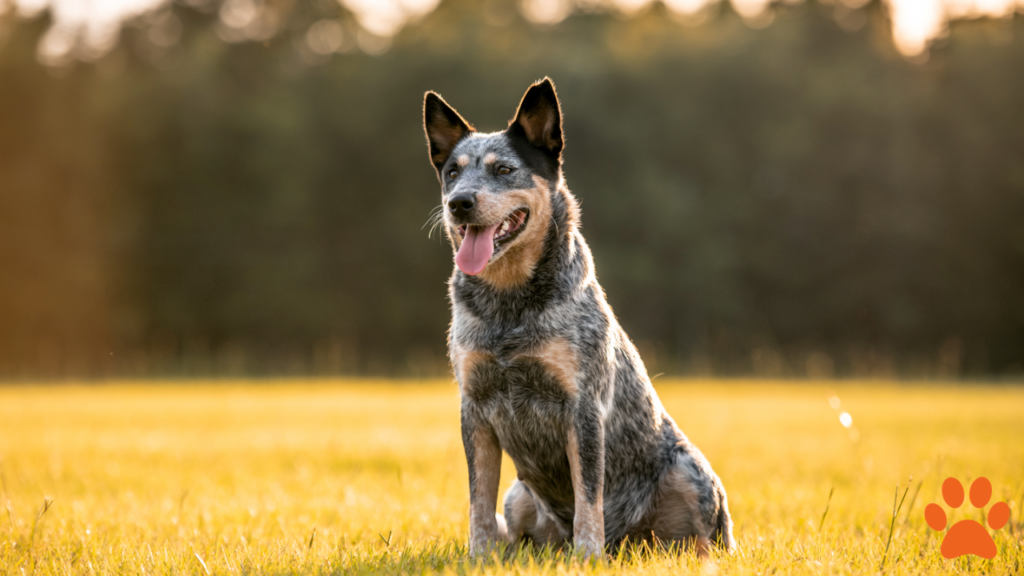
When you bring an Australian Cattle Dog into your life, you’re not just getting a pet;
you’re gaining a companion with a remarkable life expectancy of 12-16 years.
A testament to their standing among the most health-conscious dog breeds.
Due to their activity level and eagerness, Australian Cattle Dogs demand an interactive lifestyle.
They are not the type to lounge around all day.
Their need for regular exercise is not just about physical health; their mental wellbeing hinges on it too.
Ensuring their routine includes plenty of physical challenges is key to maintaining their status as one of the healthiest large dog breeds.
| Breed Traits | Benefits |
|---|---|
| High intelligence | Promotes interactive training and mental stimulation |
| Strong work ethic | Enables engagement in various activities and jobs |
| Outstanding stamina | Supports sustained exercise and activity |
| Impressive life expectancy | Fewer health issues with proper care |
It’s clear that the Australian Cattle Dog is a superb pick for those who value a dynamic lifestyle and long-term canine companionship.
As part of the giant breed group, they bring significant size.
They are an incredibly robust large dog breed that, with your care, can lead a full, spirited life.
Siberian Husky
If you’re seeking one of the healthiest large dog breeds, the Siberian Husky might be the perfect addition to your family.
Known for their striking appearance and friendly demeanor.

These big dogs exhibit robust health and are often grouped among the healthiest large dog breeds.
Their thick fur and mesmerizing eyes are not just for show; they come from a lineage of endurance and resilience.
As a health-conscious dog owner, it’s essential to understand the needs of a Siberian Husky.
Exercise is at the forefront of maintaining their well-being.
These dogs thrive on physical activity.
One of the health-conscious dog breeds that require regular, strenuous exercise to stay in peak condition.
However, like any breed, they have specific health considerations.
Siberian Huskies may be prone to hereditary conditions such as cataracts.
It’s crucial to have regular vet checks.
But don’t let this concern dampen your spirit.
With proper care, your husky could be a joyful and healthy companion for up to 14 years or more.
Here’s a brief snapshot of what makes the Siberian Husky stand out:
| Aspect | Details |
|---|---|
| Exercise Needs | High |
| Temperament | Friendly and energetic |
| Common Health Concerns | Cataracts |
| Lifespan | Up to 14 years with proper care |
| Suitable For | Health-conscious families seeking a loyal and active companion |
Labrador Retriever
Labrador Retrievers stand out as both a beloved family pet and an emblematic figure among the best large breed dogs.
These friendly and active dogs boast the robustness characteristic of giant dog breeds.
This makes them a resilient and health-conscious choice for owners.
However, even the most robust large dog breeds face health woes.
Labrador Retrievers are no exception.
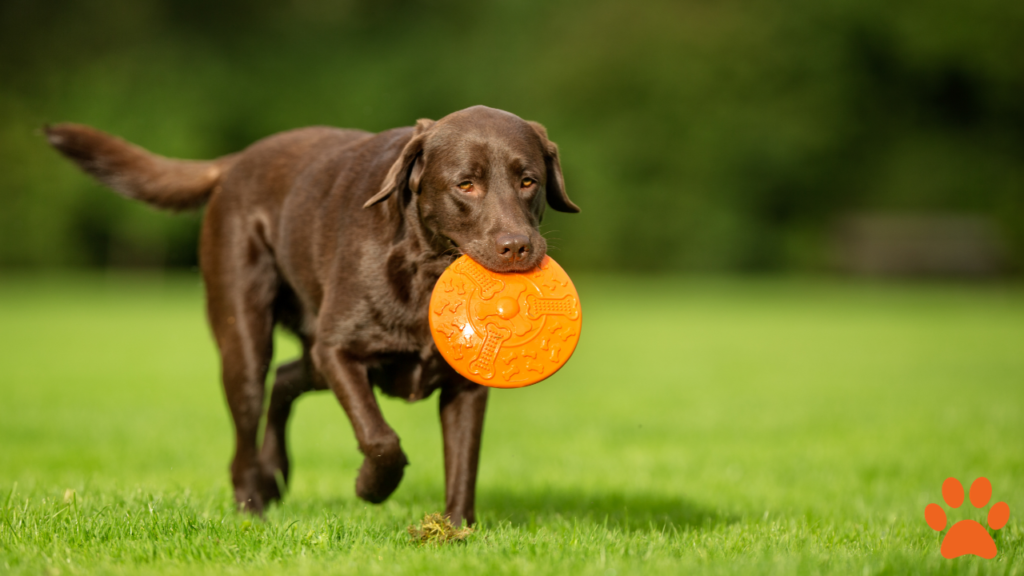
As an aspiring or current Labrador owner, a proactive approach to your furry friend’s health is critical.
Renowned for their active nature.
Labradors fit perfectly into the category of active dog breeds.
Requiring daily physical activity to maintain their zest and wellbeing.
This routine not only channels their energy but also wards off potential health complications.
Your Lab’s dietary needs are just as significant.
Proper nutrition plays a central role in preventing obesity – a common concern among large dog breeds.
When it comes to health checks, it’s essential to stay vigilant.
Hip and elbow dysplasia, often found amongst large and robust dog breeds, can affect Labradors.
Regular veterinary exams should be on your list of priorities.
Early detection through scheduled vet visits helps manage these conditions effectively.
Your commitment to a health-conscious regimen will reflect in the longevity and vitality of your Labrador Retriever.
By embracing the responsibilities that come with owning such an active and robust breed, you ensure you’re providing the best for one of the healthiest large dog breeds.
Here’s to many happy, tail-wagging years ahead with your loyal Lab!
Standard Poodle
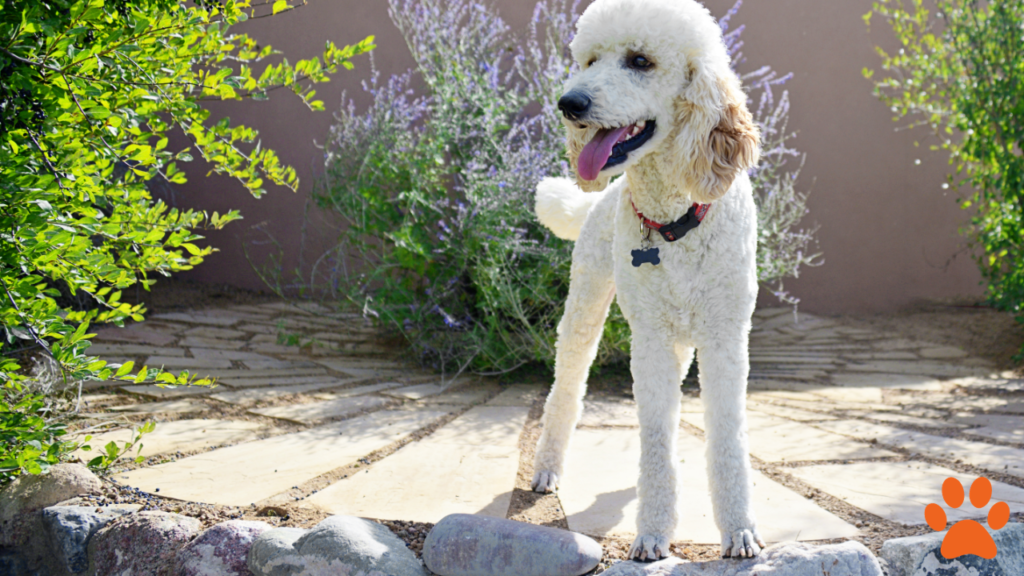
Searching for a four-legged family member that embodies grace, intelligence, and vitality?
The Standard Poodle is an exceptional choice among the healthiest large dog breeds.
Renowned for their friendly demeanor and spirited agility.
Standard Poodles are the epitome of a dynamic canine companion.
Not only are they one of the most active dog breeds, but they also boast a long lifespan.
Approximately 12 to 15 years, ensuring a lasting bond with your household.
Beyond their agility and smarts, Standard Poodles are distinguished as one of the hypoallergenic dog breeds.
This is thanks to their unique coats that shed minimally.
This characteristic makes them particularly suitable for families with allergies.
- Minimal health issues: Standard Poodles keep vet visits to a minimum, provided they’re given routine care and preventative checkups.
- Longevity: With a lifespan that outlasts many other large breeds, the Standard Poodle’s vitality is a gift to any home.
- Perfect for active owners: Whether you love jogging, hiking, or agility sports, these dogs will keep stride with your upbeat lifestyle.
- Family-friendly: Their erudite and loving nature paired with a hypoallergenic coat makes the Standard Poodle a hit in households with kids and adults alike.
Standard Poodles continue to be one of the healthiest dog breeds for families.
They have minimal predispositions to health issues.
Embrace the chance to bring one of these active and endearing companions into your life.
Providing an enriching experience filled with vigor, intelligence, and affection.
Old English Sheepdog
If you’re seeking a large dog breed that’s both affectionate and ideal for families,
the Old English Sheepdog may be the furry friend you’re looking for.
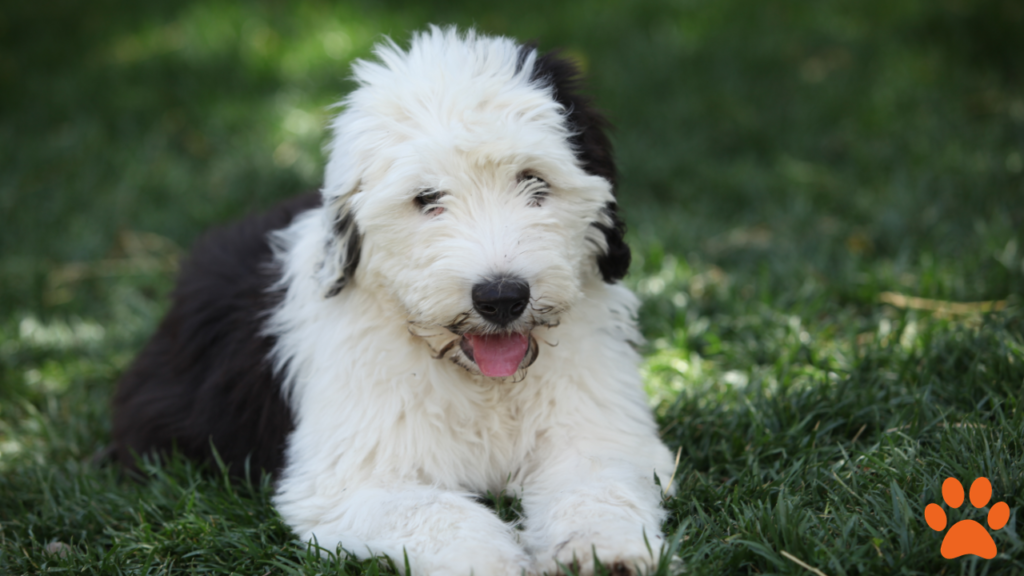
Known for their shaggy coats and gentle nature, these pups make delightful companions.
Categorized among giant dog breeds.
Old English Sheepdogs are remarkably robust and generally healthy.
Fitting perfectly into the list of the healthiest large dog breeds.
When you bring an Old English Sheepdog into your home, you’re not just getting a pet;
you’re adding a gentle giant to your family circle.
Suitable for both adults and children.
They exude a laid-back disposition that makes them healthy dog breeds for families.
However, as with any large breed, being mindful of their physical health is crucial.
One such concern to watch for is a condition known as exercise-induced collapse.
This can cause the dog to collapse after strenuous activity.
Fortunately, with proper care and moderated exercise, this issue can be effectively managed.
With their comforting presence and robust constitution.
Old English Sheepdogs have earned their reputation as resilient companions.
Their longevity is testament to their hardiness, boasting a lifespan of 10-12 years.
To ensure your Old English Sheepdog remains in peak condition, regular health checks are essential.
| Characteristic | Description |
|---|---|
| Average Lifespan | 10-12 years |
| Key Health Consideration | Exercise-Induced Collapse |
| Recommended Family Suitability | High – excellent with children |
| Exercise Needs | Moderate – requires regular activity, but intensity should be monitored |
| Temperament | Affectionate, gentle, adaptable |
Greyhound
When you think of a Greyhound, what often comes to mind is an image of sleek, graceful velocity.
These dogs are the epitome of speed and elegance, holding the title of the fastest dog breed on the planet.
Capable of reaching impressive speeds of up to 45 miles per hour.
Greyhounds have earned their fame on the racing tracks.
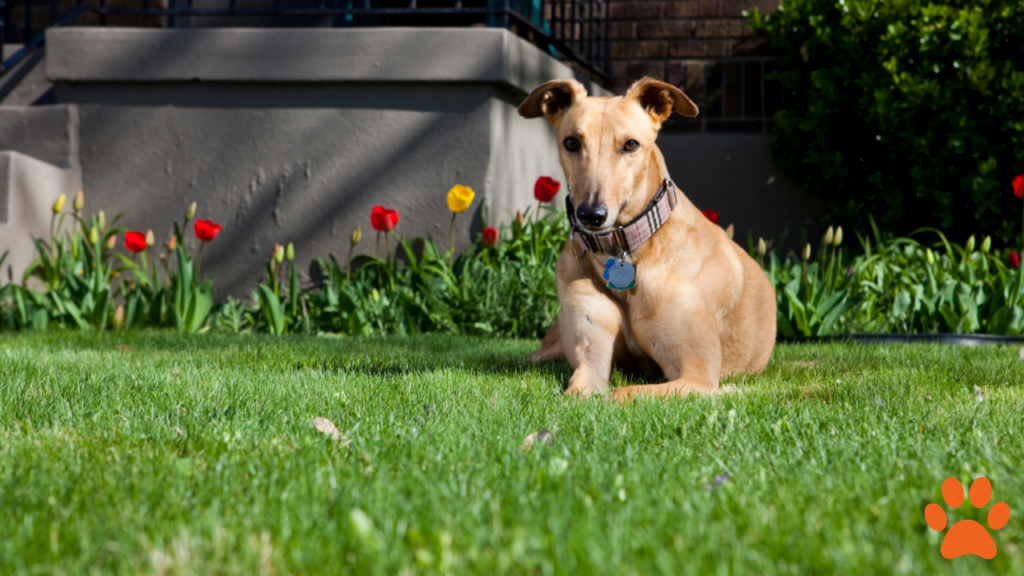
But there’s much more to these dogs than just their pace.
Greyhounds not only come with an aerodynamic build.
They also rank among the healthiest large dog breeds.
With fewer instances of congenital health issues compared to other large breeds. a
A Greyhound could be your companion for a healthy life together.
Nonetheless, being mindful of possible health conditions specific to large dog breeds, such as congenital heart disease and osteosarcoma, is crucial for maintaining their wellbeing.
Let’s take a closer look at the health profile of a Greyhound with a detailed table:
| Health Aspect | Details | Preventative Measures |
|---|---|---|
| Life Expectancy | 10-14 years | Regular vet checkups |
| Common Health Concerns | Congenital heart disease, osteosarcoma | Health screening, balanced diet |
| Exercise Needs | High; requires regular physical activity | Consistent exercise routine |
| Temperament | Intelligent, affectionate, gentle | Positive reinforcement, socialization |
| Dietary Considerations | Prone to bloat; requires monitored feeding | Meal portioning, avoidance of rapid eating |
If you’re seeking a robust large dog breed with a pinch of speed, a Greyhound could be the perfect fit.
These dignified canines, while known for their racing prowess, make calm and affectionate family pets.
Keep in mind their potential health risks.
Provide consistent care, and you’ll have a loyal and healthy companion by your side.
Rottweiler
When you think of a Rottweiler, the words power and loyalty are likely to come to mind.
These canines are not just known as one of the strongest large dog breeds.
They are also counted among the healthiest large dog breeds—that is, given the correct care and attention.
They are a robust dog breed.
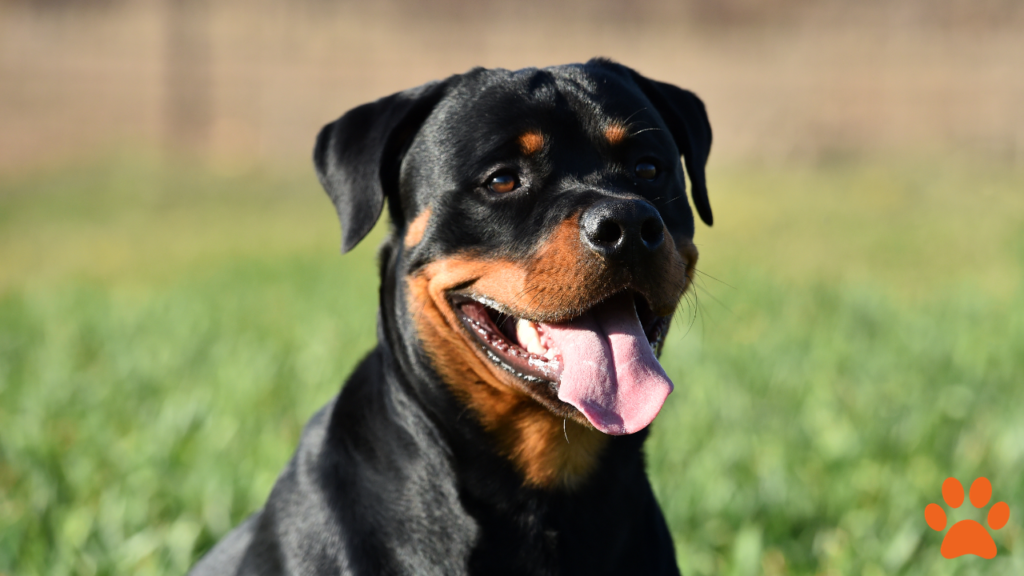
Celebrated for their remarkable strength and unwavering dedication to their families.
Mental stimulation and physical activity are the cornerstones of keeping a Rottweiler healthy.
- Consistent Training: A regimen of regular training keeps their minds engaged and bodies in prime condition.
- Structured Lifestyle: Rottweilers thrive on routine and clear expectations, setting the framework for a well-adjusted pet.
- Regular Exercise: To expend energy and maintain muscle mass, an active lifestyle is a must for these active dog breeds.
By catering to their need for activity, Rottweilers can sidestep many potential health issues.
Their need for mental and physical tasks makes them ideal for someone who appreciates an active lifestyle.
| Activity Type | Benefits for Rottweiler |
|---|---|
| Obedience Training | Enhances mental acuity and strengthens the owner-dog bond. |
| Weight Pulling | Builds muscle and replicates tasks they are historically bred to perform. |
| Agility Courses | Improves dexterity and offers mental challenges. |
| Long Walks/Runs | Encourages cardiovascular health and helps manage weight. |
| Swimming | A low-impact exercise ideal for joint health. |
| Interactive Games | Keeps the mind sharp and provides fun bonding opportunities. |
Rottweilers can be predisposed to certain genetic issues.
This includes conditions such as hip dysplasia.
With vigilant care and a proactive approach to their health, you can create a nurturing environment for your Rottweiler.
These dogs are not simply pets;
they are mental companions and physical powerhouses, rolled into a coat of loving protection for you and your family.
The Doberman
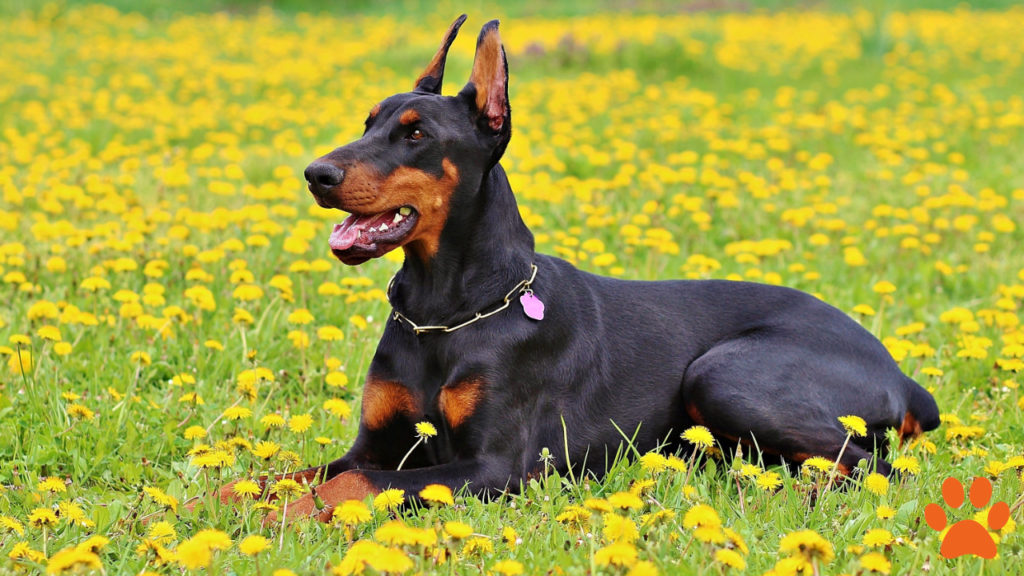
Known for their remarkable agility and sharp intelligence.
Dobermans are the embodiment of healthy dog breeds.
Engaging with them means delving into a routine that prioritizes mental stimulation.
They love physical activity, a perfect match for those who lead an active lifestyle.
Keeping your Doberman at the peak of health involves more than just regular jogs;
it’s about integrating them into a structured environment.
These canines thrive when challenged with tasks.
They benefit greatly from consistent training.
Robust health doesn’t come solely from exertion;
regular vet visits play a crucial role in maintaining their well-being.
For those who seek a dog breed that is both mentally and physically resilient, the Doberman stands out.
They possess the qualities that define robust large dog breeds.
They also demonstrate a remarkable willingness to learn and please their owners.
Whether you are an individual seeking a reliable protector or a family desiring a vigorous playmate.
The Doberman’s adaptability makes them an ideal candidate for a diverse range of owners.
Frequently Asked Questions:
What are some of the healthiest large dog breeds?
Some of the healthiest large dog breeds include the Australian Shepherd, German Shepherd, Belgian Malinois, Alaskan Malamute, German Shorthaired Pointer, Border Collie, Australian Cattle Dog, Siberian Husky, Labrador Retriever, Standard Poodle, Old English Sheepdog, Greyhound, Rottweiler, and Doberman.
What factors contribute to a dog’s overall health?
A dog’s health is influenced by genetics, proper nutrition, sufficient exercise, regular veterinary care, and mental stimulation.
How can I ensure my large breed dog stays healthy?
To keep your large breed dog healthy, engage them in regular physical exercise, provide a diet that meets AAFCO standards, offer plenty of mental stimulation, and schedule routine veterinary check-ups to detect and prevent possible hereditary diseases early.
Are there health issues common among large dog breeds?
Yes, some health issues common among large dog breeds include hip dysplasia, elbow dysplasia, bloat, and certain genetic eye conditions. It’s important to research each breed’s specific health challenges and work with your vet to monitor and prevent these issues.
What is the average lifespan of the healthiest large dog breeds?
While lifespans can vary depending on numerous factors, many of the healthiest large dog breeds have an average lifespan ranging from 10 to 16 years, with proper care and attention to their health needs.
Can large dog breeds be good family pets?
Absolutely! Many large dog breeds are great with families due to their friendly nature, loyalty, and protective instincts. Breeds like the Labrador Retriever, German Shepherd, and Standard Poodle are known for adapting well to family life.
